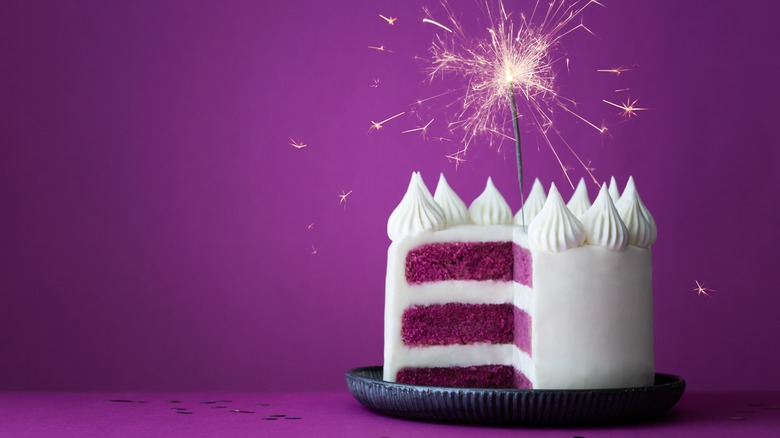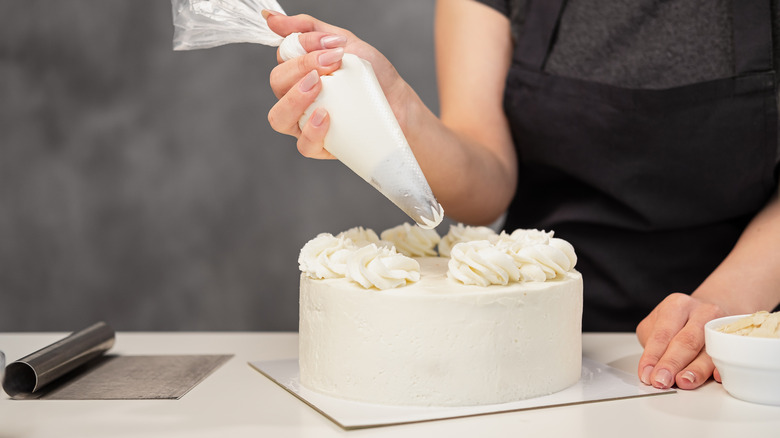How Many Cups Of Frosting Does It Take To Ice A Small Cake?
We may receive a commission on purchases made from links.
What do you think of when you think of a small cake? Somewhere between a cupcake and a big old sheet cake from Costco, there are a lot of possible interpretations. Heck, what do you think of when you think of frosting? Fondant, cream cheese, ganache, meringue, or one of the many buttercream options in circulation? These kinds of existential questions can only ever truly be answered by desire and its primal antecedent, hunger. However, for today's purposes, we're going to assume that a small cake refers to a cute little 6-inch dessert.
Six inches is the smallest a cake can appear and still automatically register generically as "a cake," rather than some other, micro category of baked good. It is also the smallest default size available at some of the nation's biggest retailers without verging into custom order territory. Recipes for 6-inch cakes — and the properly sized pans fit to make them — are also readily available. And, assuming you're making a three-layer cake (plenty of those pans automatically come in sets of three, like this one rom E-far) and working with one of those fluffy buttercream varieties, you'll need about 3 cups of frosting to cover the cake in its entirety.
How to frost your 6-inch cake
First, be aware that we've portioned this amount of frosting to ensure that you do not run out, rather than accounting for using up every last bit. You'll probably end up with a little extra, especially if you're also using another component, like fresh fruit or jam. But it's better to have more than less. After all, it's a cake, so it's likely tied to some type of celebration, even if that celebration is just making it through Wednesday. Once armed with your 3 cups of frosting and an icing spatula, such as this tool from Wilton, there are a few critical keys to perfecting the icing on the cake.
It is crucial to let your layers cool completely. Icing early is not a shortcut; it'll just melt, slide, and ultimately waste the sweet stuff. When the cake is ready, portion your frosting to allow for even distribution between layers. That's already going to amount to, conservatively, about a 1/2 cup for each. Next, do a crumb coat. That's the very thin pass of frosting that captures any wily crumbs looking to break free. Scrape to even it all out, then chill the cake in the refrigerator for about half an hour or so to set before finishing with your final pass of decorative frosting, which you can even do prettily with a spoon. Any extra will last in the fridge for about a week, although you can also freeze leftover frosting for long-term storage.

